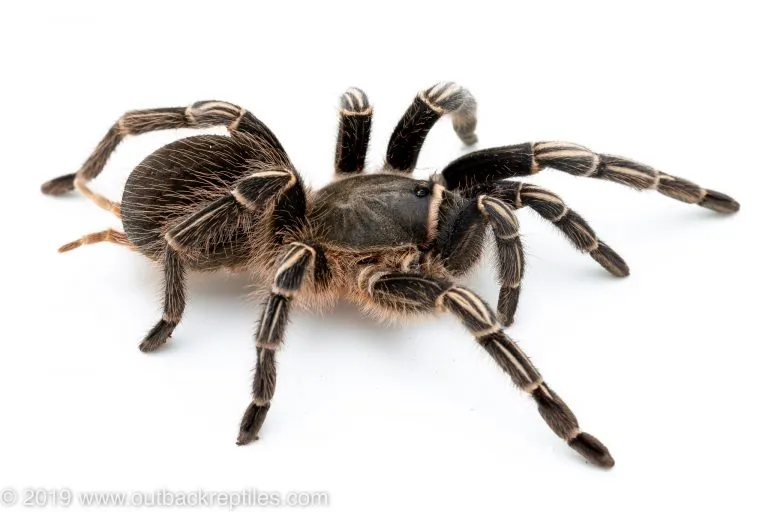Striped Knee Tarantula Habitat
Caring for a Striped Knee Tarantula (Aphonopelma seemanni) is a rewarding experience, offering a fascinating glimpse into the world of arachnids. This guide focuses on the core aspects of their care, ensuring your tarantula thrives in a safe and comfortable environment. Proper habitat setup is crucial for the well-being of your Striped Knee Tarantula. Providing the right living conditions is the first step toward a happy and healthy pet. Understanding the specific needs of this species will enable you to create an ideal home for your tarantula, minimizing stress and maximizing its lifespan. This includes enclosure size, substrate, decor, temperature, and humidity.
Enclosure Size and Setup
Choosing the right enclosure is essential. A good starting point is a 10-gallon tank for juveniles, upgrading to a 20-gallon long tank for adults. The enclosure should be well-ventilated with a secure lid to prevent escapes. The enclosure needs to be escape-proof and designed with the tarantula’s safety in mind. Ventilation is critical to prevent the buildup of harmful gases and maintain proper humidity levels. Consider the adult size of the tarantula when selecting the enclosure, providing enough space for movement and burrowing. Avoid overly large enclosures for smaller tarantulas, as they may feel insecure.
Substrate and Decor
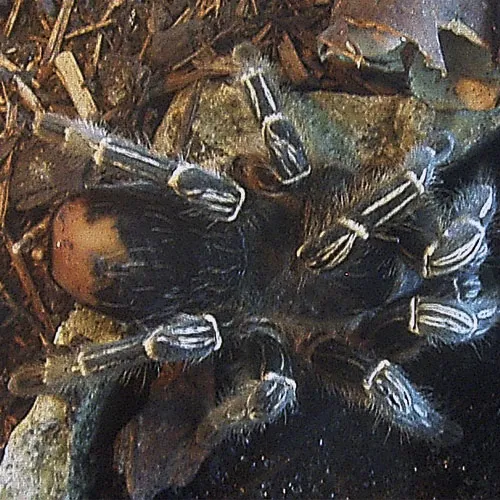
The substrate should be deep enough for burrowing, approximately 4-6 inches deep. A mixture of coconut fiber, peat moss, and a little bit of vermiculite works well. Avoid substrates that can harbor mold or mites. Decorate the enclosure with a hide, such as a piece of cork bark or a half-log, to provide a secure retreat. Add a shallow water dish for drinking. Substrate choice affects humidity and the tarantula’s ability to burrow. Naturalistic decor enhances the enclosure’s aesthetic and provides enrichment for the tarantula. Ensure all decor is non-toxic and free of sharp edges.
Temperature and Humidity
Maintain a temperature range of 75-85°F (24-29°C). Use a heat mat on the side of the enclosure, not the bottom, to avoid overheating. Humidity should be kept at 60-70%, which can be achieved by lightly misting the enclosure once or twice a week, depending on ventilation and substrate. Use a hygrometer to monitor humidity levels accurately. Proper temperature and humidity are vital for the tarantula’s molting process and overall health. Avoid direct sunlight, as this can overheat the enclosure. Ensure good ventilation to prevent mold growth.
Striped Knee Tarantula Feeding
Proper feeding is another key aspect of Striped Knee Tarantula care. Providing the right food in the correct amounts ensures that your tarantula receives the necessary nutrients for growth and development. It’s important to understand what they eat, how often to feed them, and how to provide fresh water. Overfeeding can lead to health problems, and underfeeding can cause stress and hinder growth. Following these guidelines will help you establish a healthy feeding routine for your Striped Knee Tarantula and keep it thriving.
What to Feed Your Tarantula
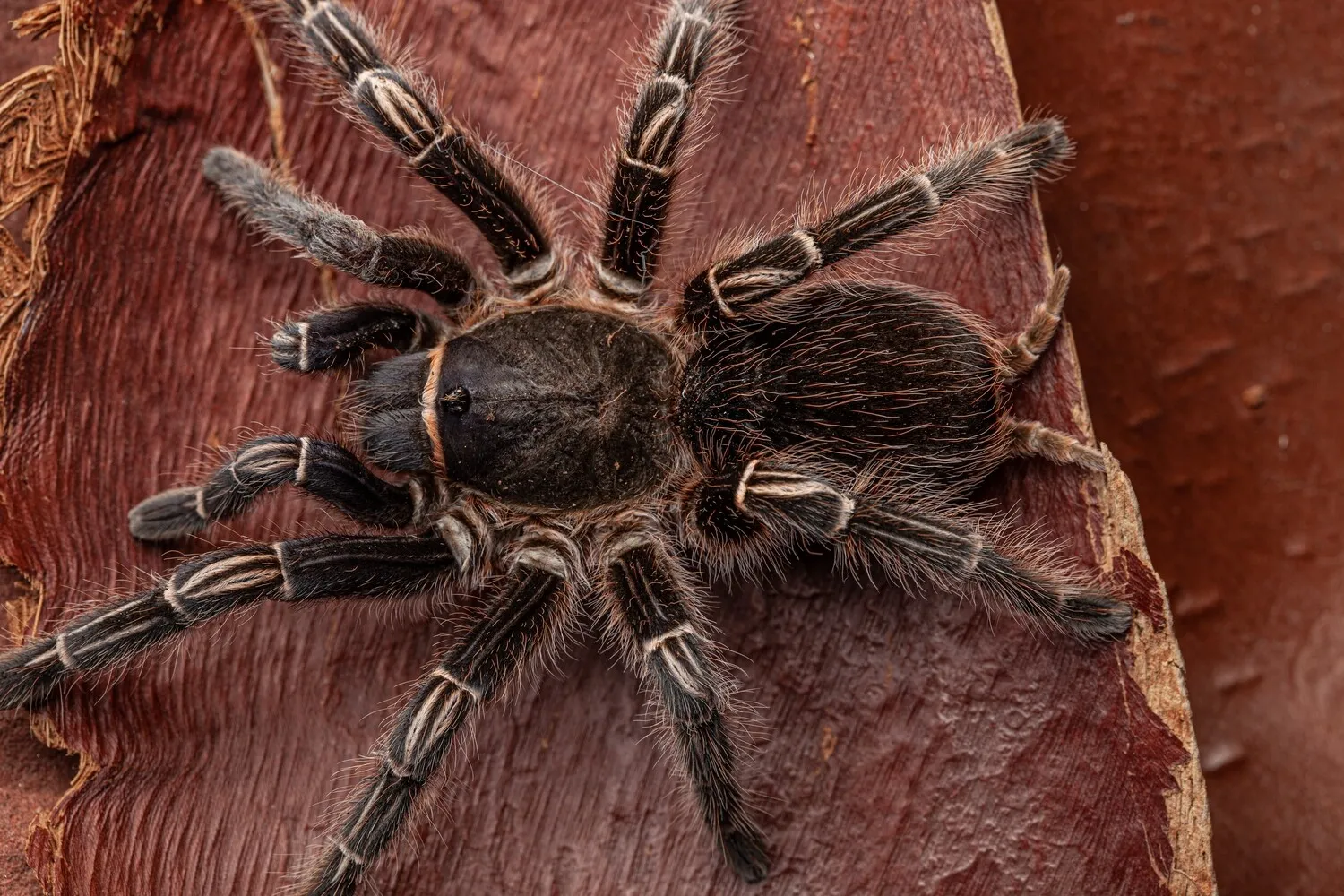
Striped Knee Tarantulas are insectivores. Feed them a variety of insects, such as crickets, mealworms, and roaches. Ensure the insects are gut-loaded with nutritious food before feeding them to your tarantula. The size of the prey should be appropriate for the tarantula’s size; the insects should generally be no larger than the tarantula’s abdomen. Avoid feeding wild-caught insects, as they may carry parasites or pesticides. Always remove uneaten prey within 24 hours to prevent stress and mold growth in the enclosure. Variety in the diet ensures a balance of nutrients and keeps your tarantula interested.
Feeding Frequency
Juvenile tarantulas should be fed 2-3 times a week. Adult tarantulas can be fed once a week or every other week, depending on their appetite and size. Observe your tarantula’s abdomen; if it appears plump, you can reduce feeding frequency. During molting, tarantulas will typically refuse food. Do not offer food during this period. Adjust feeding frequency according to the tarantula’s growth stage and individual needs. Overfeeding can lead to a shorter lifespan, while underfeeding can cause stress and impact health.
Watering Your Striped Knee Tarantula
Provide a shallow water dish with fresh water at all times. The water should be shallow enough to prevent the tarantula from drowning. Refill the water dish as needed, at least twice a week, and clean it regularly to prevent the growth of bacteria. You can also lightly mist the enclosure occasionally to maintain humidity. Ensure the water is always clean and readily available for your tarantula to drink. Proper hydration is essential for their health, particularly during molting. Always use dechlorinated water.
Striped Knee Tarantula Maintenance and Handling
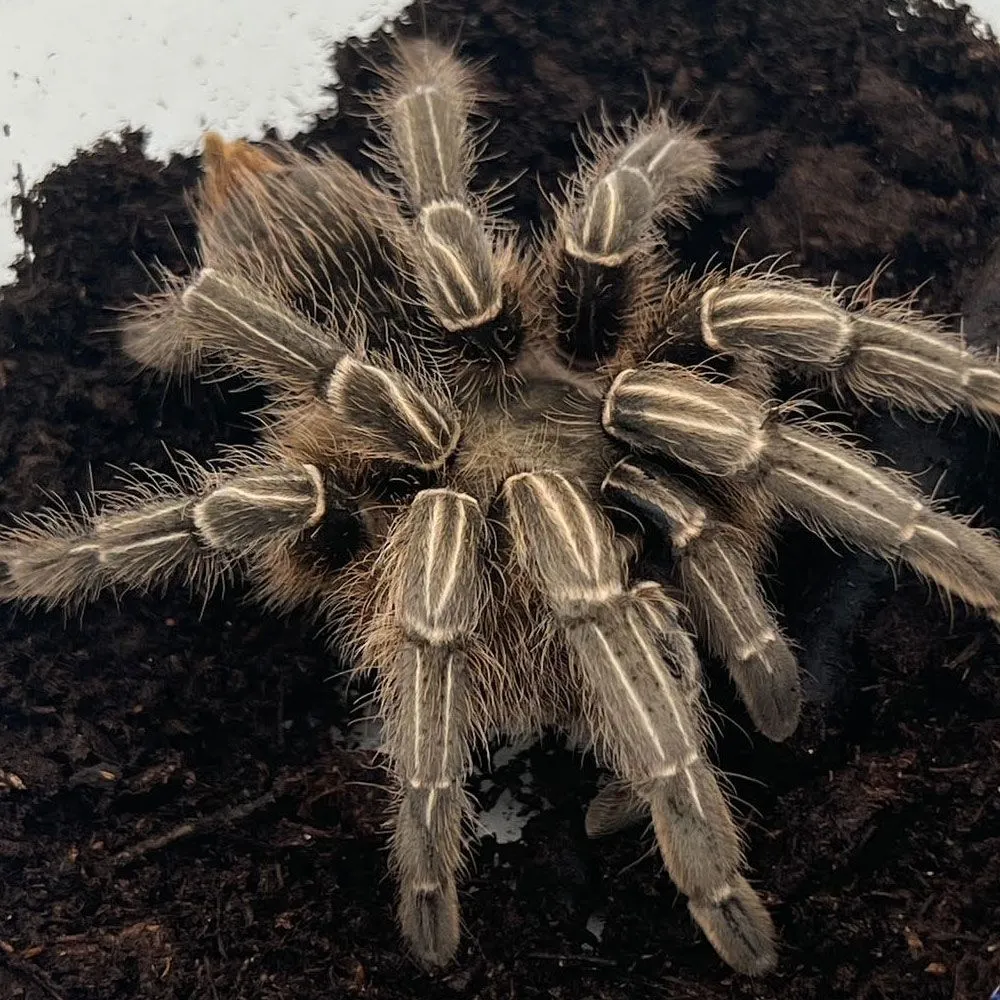
Regular maintenance is crucial for keeping your Striped Knee Tarantula healthy and your enclosure clean. This involves cleaning the enclosure, maintaining the substrate, and, if necessary, handling your tarantula. While these tarantulas are generally docile, they can still bite if provoked. Always take precautions and handle them with care. By following these guidelines, you can ensure the well-being of your tarantula and create a safe and hygienic environment.
Cleaning and Maintenance
Spot clean the enclosure weekly, removing any uneaten food, feces, or molted exoskeletons. Replace the substrate every 6-12 months, or sooner if it becomes heavily soiled. Avoid using harsh chemicals or cleaners near the tarantula’s enclosure. Regularly inspect the enclosure for signs of mold or pests. Cleaning and maintenance prevent the buildup of harmful substances and maintain a healthy environment for your tarantula. Proper ventilation and substrate management also contribute to a cleaner enclosure.
Handling Guidelines
Handling Striped Knee Tarantulas is generally not recommended unless necessary, such as for enclosure maintenance. If you do handle your tarantula, do so gently and close to the ground. Always wash your hands before and after handling. Avoid sudden movements and be aware that tarantulas can be fast and can fall. Be cautious of the tarantula’s urticating hairs (hairs they can flick off as a defense mechanism); avoid touching them. Handling can stress the tarantula, so it should be kept to a minimum. Respect their space and observe them in their habitat as much as possible.
Striped Knee Tarantula Health and Common Issues
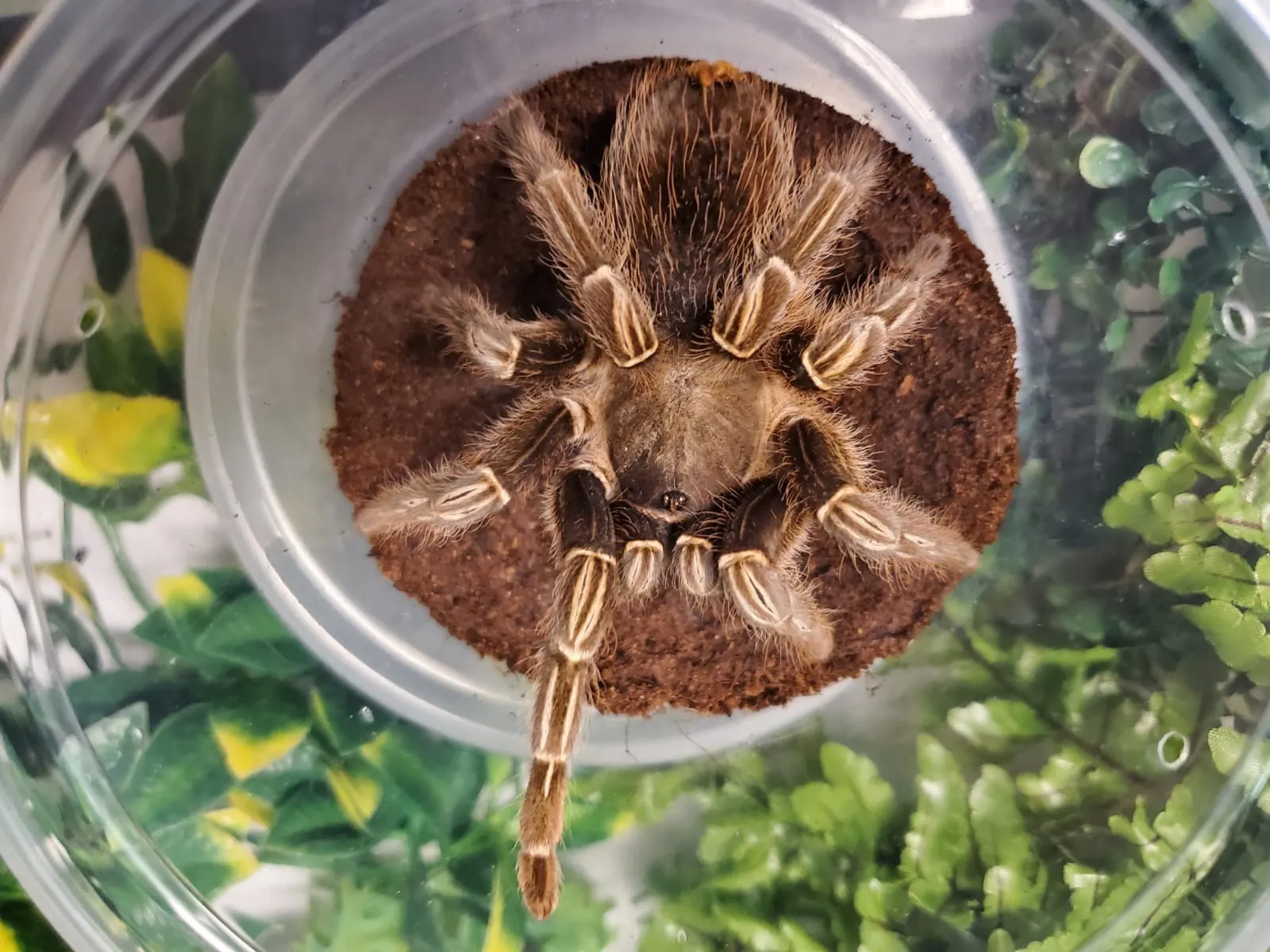
Understanding the health of your Striped Knee Tarantula is crucial for providing proper care. Knowing the signs of a healthy tarantula and being able to identify common issues will help you respond quickly to any health concerns. This knowledge will enable you to address any issues effectively and potentially save your pet’s life. Preventative measures, such as maintaining a clean environment and proper diet, are essential for promoting good health.
Signs of a Healthy Tarantula
A healthy Striped Knee Tarantula should have a plump abdomen, be active (but not overly so), and have a good appetite. Its fangs should be intact, and its legs should move freely. The tarantula should be alert and responsive to its environment. A healthy tarantula will molt regularly, shedding its old exoskeleton. The color of the tarantula should be vibrant and true to its species. Healthy tarantulas are usually found in their hide, especially during the day, and come out to feed. Observe your tarantula regularly to recognize its normal behavior and identify any changes.
Common Health Problems
Common health problems include dehydration, mites, and injuries. Dehydration can be caused by insufficient water or low humidity. Mites can infest the tarantula and its enclosure, causing irritation. Injuries can occur from falls or rough handling. Look for signs of illness such as lethargy, loss of appetite, and unusual behavior. Address any problems promptly. Isolate the sick tarantula if possible. Consult a veterinarian experienced with arachnids for diagnosis and treatment. Maintaining a clean environment can help prevent many health problems.
Seeking Veterinary Care
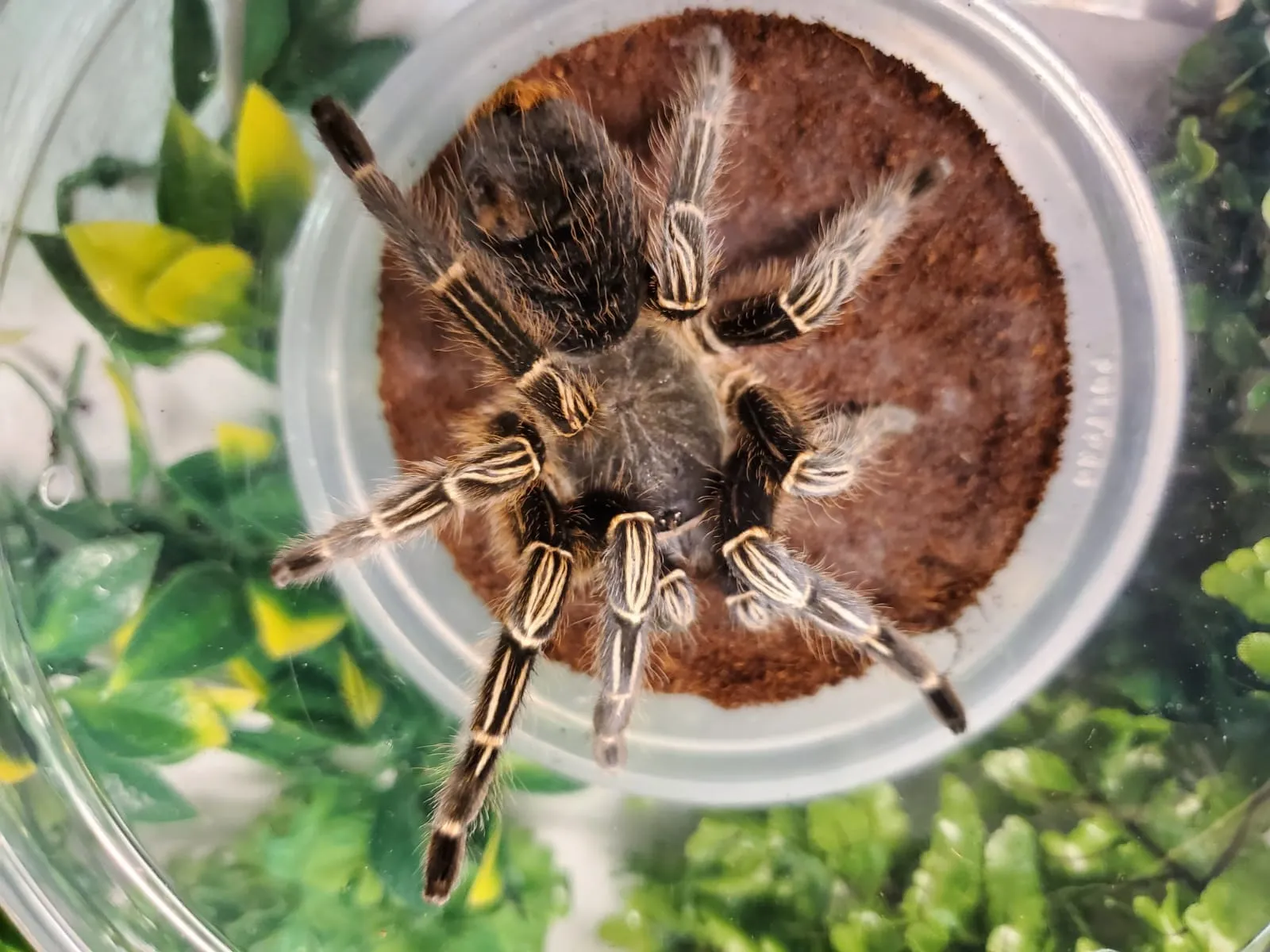
If you notice any signs of illness or injury, seek the advice of a veterinarian experienced in treating arachnids. Prepare information about the tarantula’s environment, diet, and recent behavior. Do not attempt to treat the tarantula yourself without professional guidance. Early intervention can often improve the chances of a successful recovery. Accurate diagnosis and appropriate treatment are essential. Keeping your tarantula’s health a top priority allows it to live a long and happy life.
